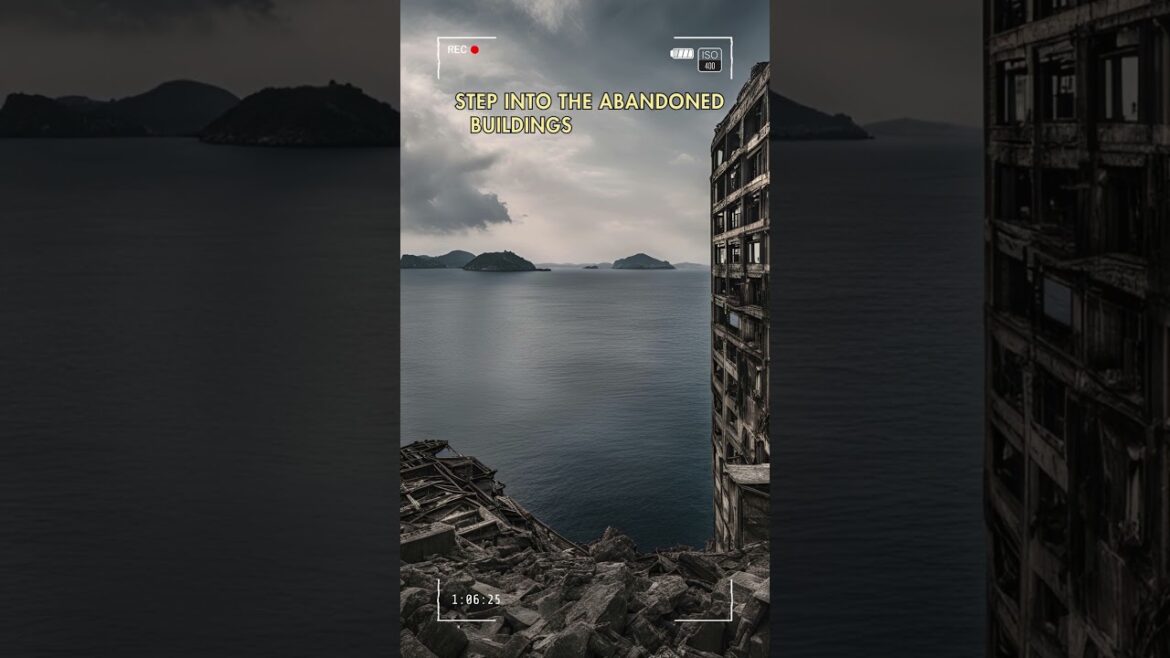Ghosts of Hashima Island: Journey to Japan’s Forgotten Battleship Hashima Island 🚢 #travel
Ghosts of Hashima Island: Journey to Japan’s Forgotten Battleship
I had always been drawn to the eerie beauty of abandoned places, where the silence of the past hangs heavy in the air. Hashima Island, known to many as Gunkanjima or “Battleship Island,” was one such place that beckoned me with its haunting allure. Once a bustling coal-mining hub, it had long since been left to the whims of the sea and time, its concrete structures standing as solemn sentinels of a forgotten era.
The journey to Hashima began early in the morning, with the sun just beginning to cast its golden light over Nagasaki. I boarded a small ferry, the only means to reach this isolated island, now a UNESCO World Heritage Site. As the boat cut through the calm waters of the East China Sea, the silhouette of Hashima slowly emerged on the horizon. At first, it appeared as a dark, jagged shadow against the sky, but as we drew closer, the details became clear—a sprawling mass of concrete buildings, huddled together like ghosts frozen in time.
Stepping off the ferry, I felt an immediate sense of reverence. The island was a labyrinth of crumbling apartment blocks, narrow alleyways, and rusting machinery, all shrouded in a blanket of silence. It was hard to believe that this desolate place was once home to thousands of people—miners, their families, and workers who had come from across Japan to extract coal from the depths below.
Walking through the abandoned streets, I could almost hear the echoes of the past—the clanging of metal as miners worked tirelessly in the dark tunnels, the laughter of children playing in the narrow corridors, the murmur of conversations from tiny apartments that once housed entire families. But now, all that remained were remnants of a life long gone: rusted bicycles leaning against walls, shattered windows that framed nothing but the empty sky, and peeling posters advertising events that would never happen.
One of the most striking sights was the crumbling school, where desks and chairs still stood, eerily arranged as if waiting for students who would never return. The chalkboard bore faint traces of lessons long forgotten, and the silence within the walls was almost suffocating. It was here that I truly felt the weight of Hashima’s history—a place where life once thrived, now reduced to a haunting memory.
As I wandered through the ruins, I couldn’t help but reflect on the island’s rapid decline. The coal that once fueled Japan’s industrial growth was eventually replaced by petroleum, rendering Hashima obsolete. In 1974, the Mitsubishi Corporation, which had operated the mine, closed it down, and the island’s residents were forced to leave. What was left behind was a stark reminder of the fragility of human endeavors—an entire community erased almost overnight.
Yet, despite its decay, there was a strange beauty to Hashima. The island’s nickname, “Battleship Island,” was fitting—not just because of its shape, but because of the way it seemed to stand defiantly against the elements. Nature had begun to reclaim the island, with plants growing through cracks in the concrete and birds nesting in the ruins. It was as if Hashima was quietly transforming from a monument to human achievement into a testament to the resilience of the natural world.
As the day drew to a close, I made my way back to the ferry, leaving Hashima behind. The island slowly faded from view, its ghostly silhouette merging with the horizon. But the memory of my visit stayed with me, a poignant reminder of the transient nature of life and the enduring power of history. Hashima Island may be forgotten by many, but for those who visit, it leaves an indelible mark—a story of ambition, abandonment, and the ghosts that linger in the shadows of the past.

